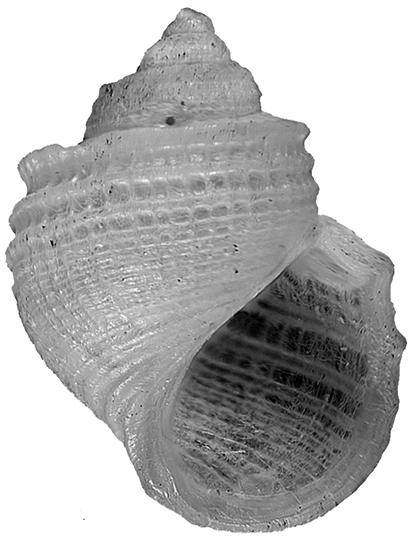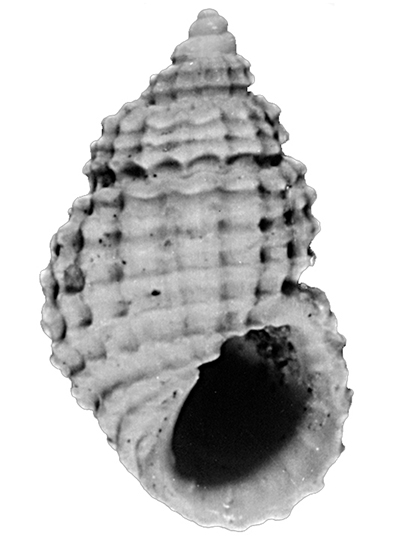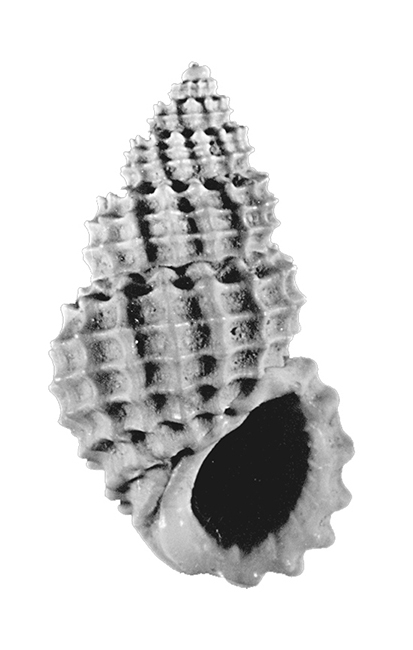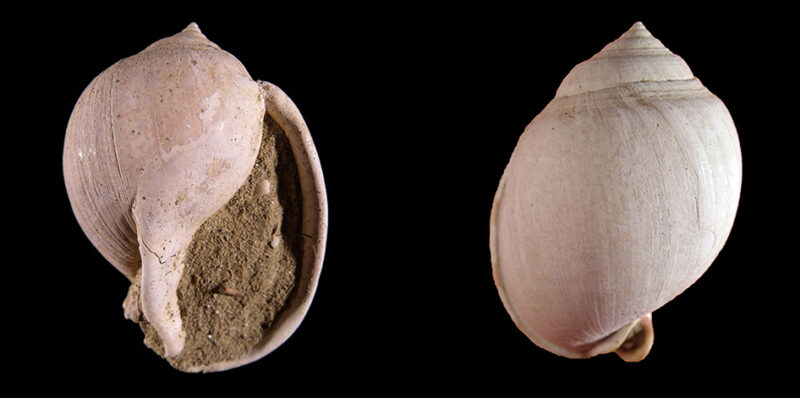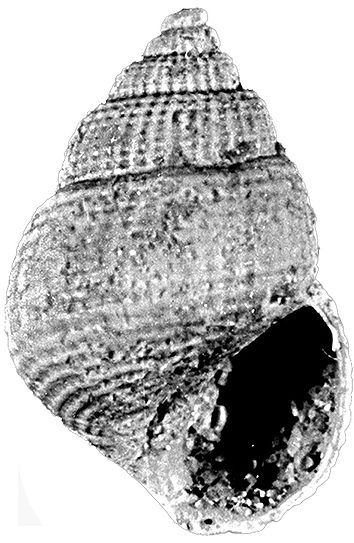Class Gastropoda Cuvier, 1795
Family Rissoidae Gray, 1847
Genus Alvania Risso, 1826
Species Alvania carinata (da Costa, 1778)
Alvania carinata (da Costa, 1778)
Not common in the Tuscan Pliocene. For Pleistocene (Calabrian), reported from Fauglia (Pisa).
Gastropoda Rissoidae Alvania Alvania carinata
Description
(O.D.) Turbo minimus albus, porcis elevatis membranaceis circulatim cinctus, anfractibus subtus angulatis. Carinatus. Tab. 8. fig. 10. Striatulus. Turbo testa subcancellata turrita, anfractibus contiguis, cingulisque varicosis interceptis. Lin. S. N. p. 1338. No. 635.
A very small shells, about the size of a hemp-feed, quite white, rather thin and transparent, and of a lengthened shape. It is set with circular think and sharp high ridges, or according to the turn of the spires. These ridges are generally three, equi-distant, and placed on the bottom part of each spire, for the upper part has only fine circular capillary ones.
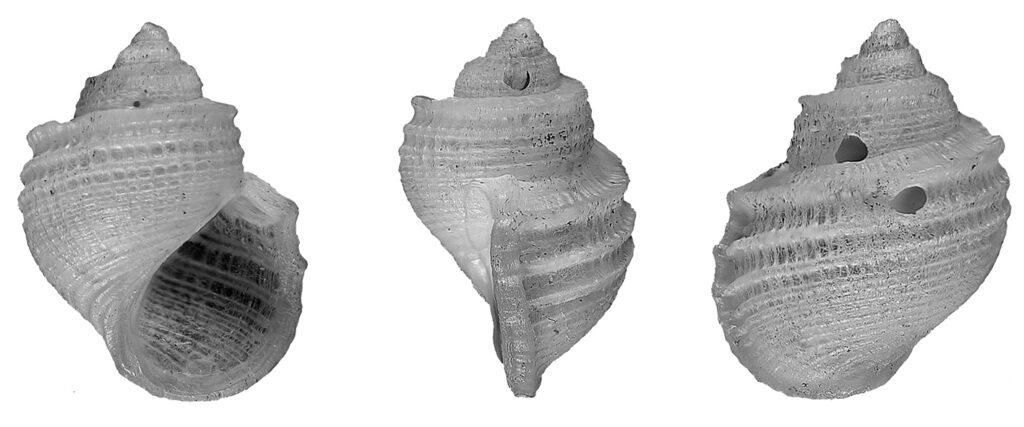
The mouth is oval, and border’d all round on the outside by a thick prominent ledge. It has no umbilicus. The spires are four, and gradually lessen to a sharp tip; the bottom of each is flat and broad, but sharp or angulated at the edge of the body, by means of the lower ridge of each spire.
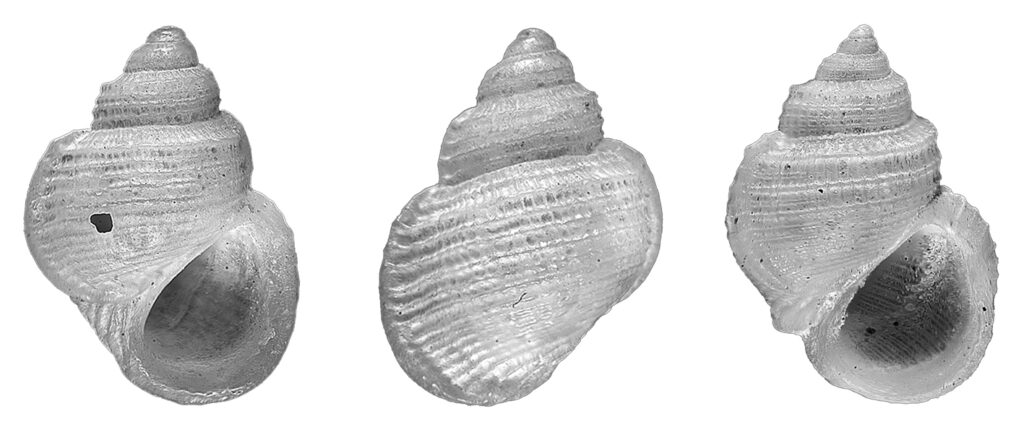
SEM – Protoconca formata da giri 2,5. percorsa da numerose papille allineate in serie spirali più o meno distanziate. Sull’apice sono presenti cinque file di papille talmente appressate da assumere l’aspetto di esili cingoletti molto distanziati. Sui giri le papille sono più robuste e più distanziate. Sulla metà dell’ultimo giro, presso la sutura anteriore, si notano due file di robuste papille unite fra loro (Chirli).
Protoconch, 2.5 whorls, with numerous papillae lined up in more or less spaced spiral series. On the apex there are five rows of papillae so tight they take on the appearance of slender spaced-out little threads. On the whorls, the papillae are more robust and more spaced. On the middle of the last whorl, near the anterior suture, two rows of sturdy papillae are observed joined together.
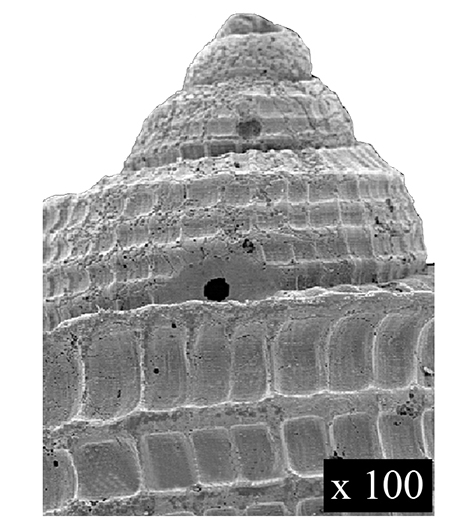
Bibliographic references and some more common synonyms
1779 Turbo carinatus – Da Costa, p. 102, pl. 8, fig. 10
1803 Turbo striatulus – Montagu, p. 306. pl. 10, fig. 5
1819 Turbo monilis – Turton, p. 200
1836 Rissoa labiata – Philippi, p. 155, pl. 10, fig. 7
1836 Rissoa trochlea – Michaud, p. 14, figs 3-4
1892 Alvania russinoniaca – Locard, p. 163
2021 Alvania carinata – Chirli & Forli, p. 102, pls 74, 75, figs C1-7, A1-18
Stratigraphic distribution
Pliocene – Italy and Spain. Pleistocene – reported from Monte Mario (Italy). Recent – Atlanto-mediterranean species, it lives in the central-northern Mediterranean between the mud and the debris of the infralittoral zone.
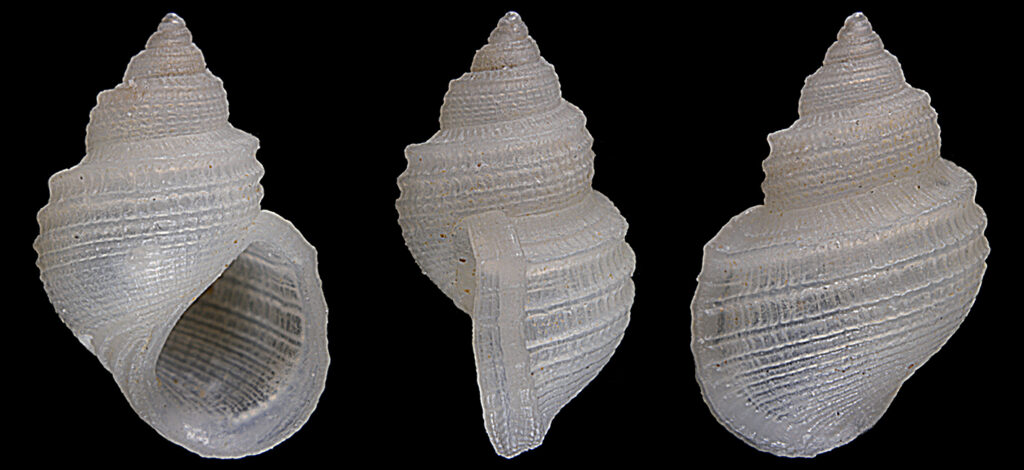
References
Mendes da Costa E. (1778). Historia naturalis testaceorum Britanniæ, or, the British conchology; containing the descriptions and other particulars of natural history of the shells of Great Britain and Ireland: illustrated with figures. In English and French. – Historia naturalis testaceorum Britanniæ, ou, la conchologie Britannique; contenant les descriptions & autres particularités d’histoire naturelle des coquilles de la Grande Bretagne & de l’Irlande: avec figures en taille douce. En anglois & françois. i-xii, 1-254, i-vii, [1], Pl. I-XVII. London. (Millan, White, Emsley & Robson). , available online at https://www.biodiversitylibrary.org/page/13116783
I, I, I, I, I, I, I, I, I, I, I, I, I, I, I, I, I, I, I, I, I, I, I, I, I, I, I, I, I, I, I, I, I, I, I, I, I, I, I, I, I, I, I, I, I, I, I, I, I, I, I, I, I, I, I, I, I, I, I, I, I, I, I, I, I, I, I, I, I, I, I, I, I, I, I, I, I, I, I, I,
Acknowledgements
Si ringrazia l’amico Carlo Chirli (Tavarnelle, Firenze) per la concessione all’uso di alcuni suoi testi. See also Edizioni Danaus

